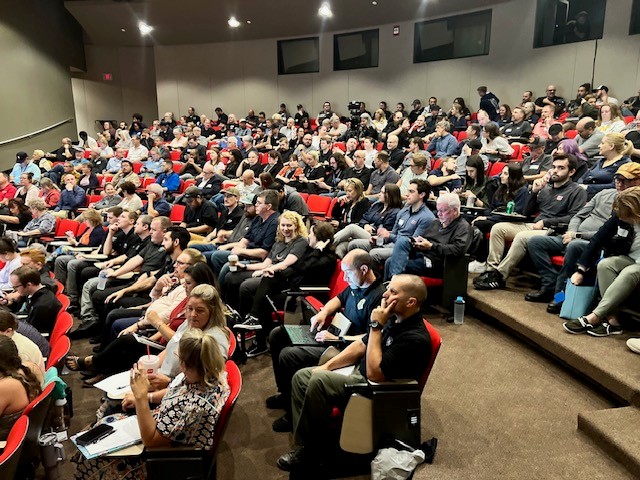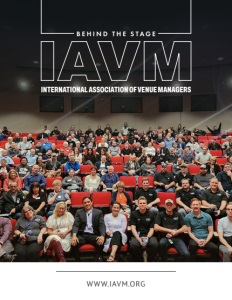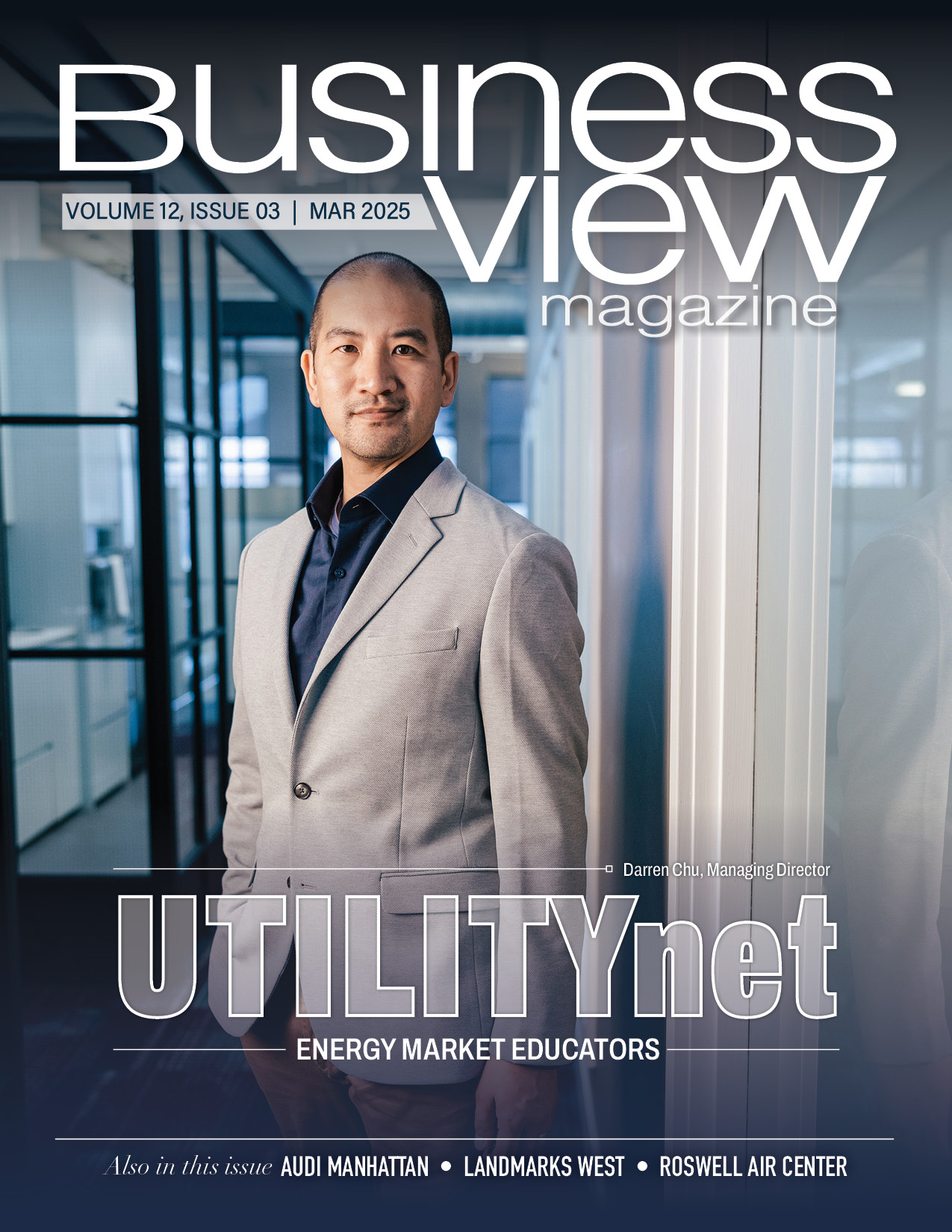Behind the Stage
How venue management is evolving to meet new audience expectations while driving community growth
The director of the International Association of Venue Managers (IAVM), Trevor S. Mitchell brings a unique blend of business acumen and passion for live events. With an MBA from the University of Missouri and 18 years of association leadership experience, Mitchell now guides an organization that supports professionals who create unforgettable experiences at venues worldwide.
“IAVM exists to support those professionals who run venues, whether they be arenas, stadiums, performing arts centers, convention centers, amphitheaters, fairgrounds—essentially anywhere a live event happens that probably isn’t in a hotel,” explains Mitchell. “Our focus is really around three areas: education, advocacy, and connection.”
This three-pronged approach allows IAVM to serve venue professionals at every career stage. The association provides resources for everyone from event service managers to general managers, ensuring they have the tools needed to excel. Mitchell notes that advocacy happens on multiple fronts: “We spend time focusing our efforts at the legislative level, both federal and state, but it’s just as equally important that we focus on advocating on behalf of the industry to the general membership.”
Beyond formal education and advocacy, IAVM creates a vital community for venue professionals. “Like most associations, we’re creating that community of individuals, of peers,” Mitchell says. “While we provide effective practices and tips and tools to help them do their jobs, that community is there to help them navigate through the unknown—the things that we can’t teach, the things that come up in the ‘what happens if you do this’ or ‘I’m looking for a solution to this, has anybody else experienced that?’”
The Impact of Venues on Community Enrichment
The conversation about venues often misses a crucial point – the profound effect these spaces have on their surrounding communities. Mitchell illuminates this connection, highlighting how IAVM venues create lasting memories while driving economic and cultural growth.
“Most people think about a performing arts theatre as just putting on plays and musicals. They don’t recognize the fact that it also does concerts and stand-up comedy and tours,” Mitchell points out. “They can do various things within their venue that creates a unique experience that wasn’t there before.”
For Mitchell, this impact is personal. “I grew up on a farm in southeast Missouri. I can still remember going into the Fox Theatre in St. Louis in 1994 and seeing my very first musical performance,” he recalls. This formative experience shapes his view of how venues, particularly performing arts centers, serve as cultural gateways.
“What we find when people are making decisions about destinations for meetings and events is they want to experience the rest of the city. Performing arts centers are just part of that equation and opportunity that really extend those opportunities,” Mitchell says.
He sees current cultural trends as opening new doors. “With the pop culture success of Wicked coming from the musical stage production to the big screen, that can translate into getting more individuals aware of the arts,” Mitchell suggests. “This is an exciting opportunity to say, ‘You liked Wicked. Here’s what else you might like. Here’s what’s coming to your town.’”
Attracting New Audiences to Performing Arts
Despite the wonder of the performing arts, the challenge of bringing new faces into theater seats remains a priority for venue managers, who must balance artistic integrity with financial sustainability. Mitchell offers practical insights into this balancing act.
“It’s always in the purview in terms of driving ticket sales because at the end of the day, they are trying to manage the bottom line of their venue and making sure that it remains profitable,” Mitchell says. “I think where we have an opportunity is to look at how we create interest in attending these venues? How do we attract non-traditional audiences?”
Mitchell sees engagement as key to expanding attendance beyond traditional theatergoers. The approach needs to respect theatrical traditions while embracing contemporary expectations. “Clearly we don’t want them on their phones or doing anything to distract the performance,” he notes, “but what are ways we can create experiential moments leading up to that? Once they walk through the foyer, even while they’re sitting in the seat before it starts, how do we engage them at intermission?”
He points to successful post-show programming that creates deeper connections. “I’ve had the opportunity at a couple of different shows where they’ve done guest productions. One of them was with Matilda, and we had a conversation about what it means for a gifted child, which is what the character is in that production,” Mitchell shares.
![]()
These supplementary experiences can transform a single performance into a memorable event that resonates beyond the final curtain. “I think we have to think differently,” Mitchell suggests. “We have to think in the minds of who we’re trying to attract, but I think there are ways to do that and be inventive about it.”
Technology and Innovation in Modern Venues
The digital transformation reshaping our world hasn’t bypassed performance venues. Mitchell points to findings from the stadium connectivity report that apply across the venue spectrum.
“When I read the report, it was for stadiums. I think it applies to all venues,” Mitchell says. “We’re looking at how consumers are really engaging when they’re inside our spaces, and I think wireless connectivity is always key. No one wants to sit in a stadium with several thousand other people and not be able to post a selfie of them at the game.”
This social sharing creates powerful marketing opportunities that venues can leverage. “We also want them to share it because their influence circle is what’s so powerful to connect to the next generation,” he explains. Technology also offers solutions to practical problems, like managing concessions during brief intermissions.
“There’s also limited space. A lot of performing arts centers have history with them, and they’re not that large,” Mitchell notes. “How can you move people through those lines when you have a 15, 20-minute intermission? There’s an opportunity there to get people to spend money, but how do you do that in a way that you get them through quickly, so they don’t get fed up?”
The financial equation remains challenging for venue operators. “There’s always going to be this question about how to lower operating costs while increasing revenues, while also not pricing out people,” Mitchell observes. “You can’t add more seats inside a performing arts theatre, so you’re restricted. I think we might see a little bit of AI coming in. We might see reconfiguring things. Some of the more tech security stuff we’re seeing come through may help reduce overhead.”
Increasing Visibility and Positive Coverage
For venues to thrive, the public must understand their value. Mitchell identifies two pivotal approaches to boost positive public perception of performing arts venues.
“I think the biggest opportunity we have to increase positive performance to the public is actually two things,” Mitchell says. “One, reporting about the impact it has on the community it surrounds and the city it has.”
He draws parallels to how other venue types quantify their economic contributions. “Much like sporting venues, much like convention centers, we need to talk about the dollars that are coming into the destination based on those events,” Mitchell explains. “While attending events is largely done by locals, it also has some transient traffic—people from out of town or people who are traveling.”
The economic angle offers compelling storytelling opportunities. “There’s an opportunity here for performing arts to talk about that impact from an economic standpoint,” Mitchell says. “By the theatre existing, how many people are they employing? How is this contributing back to the local economy through the ticket sales that they’re generating? How is it helping to add to the taxes collected that goes back to fund other things?”

Beyond finances, Mitchell emphasizes showcasing community engagement efforts. “The second thing is how the performing arts are really connecting back to the community,” he notes. “Are they doing programs with students? How do we show what the performing arts center is doing outwardly?” This dual focus—economic impact and community outreach—creates a comprehensive narrative about venue value.
Educational Programs and Professional Development
IAVM’s comprehensive educational offerings highlight its mission to equip venue professionals with essential skills and knowledge. The association maintains a robust calendar of in-person events designed to address specific industry needs.
“We offer five in-person events a year, and each of them varies depending on what it is that we’re looking for,” Mitchell explains. “We have one that’s around event safety and security, which trains people on how to support and manage crowds and create safe events.”
The organization’s flagship educational program provides foundational venue management expertise. “We have a venue management school that gets to the foundational elements of venue management, and it’s something we do every year,” Mitchell says. “It’s a two-year program and people continue to rave about it.”
These specialized offerings complement IAVM’s broader annual gatherings. “We have our annual conference, we have a senior executive symposium,” Mitchell adds. “Each of our events is tailored to a particular need and audience but is open to all of our members to attend at any time of their choosing through their registration.”
Additionally, the association is expanding its digital learning options to meet evolving member needs. “We do some online learning. We’re working on ramping that up through an online platform we’re hoping to launch in the next few months,” Mitchell shares. “Adding more real-time education, more micro-credentialing so we can get them the essentials in venue management or the basics of how to work with crowd management.”
Strategic Partnerships and Industry Collaboration
Recognizing that venue management doesn’t happen in isolation, IAVM pursues strategic alliances that amplify its impact and create new opportunities for members. These partnerships span various sectors of the events industry.
“One is Destinations International,” Mitchell notes, identifying a key relationship that connects venue managers with destination marketing organizations. This partnership acknowledges the symbiotic relationship between venues and the broader tourism ecosystem.
Mitchell highlights another critical industry alliance: “The other one is with the Exhibitions and Conference Alliance, it’s a coalition of six associations, which we’re part of.” This collaborative approach brings significant advantages. “That really brings all the elements from an exhibition standpoint together. In looking at it from all angles, we’re coming in as a single unit, not just individual impact.”
Beyond these established partnerships, IAVM is expanding its collaborative efforts to promote diversity and inclusion within the industry. “The other thing that we are focusing on is our connections and support with associations that represent minorities and underrepresented constituents that are in this event space and how our venues can better align with them,” Mitchell explains.
IAVM’s Future: Priorities for the Next Two Years
As IAVM enters its second century of service to the venue management profession, Mitchell has a clear vision for the organization’s immediate future and growth trajectory.
“We are at a crossroads for the organization and a positive opportunity,” Mitchell says. “We just celebrated our hundredth anniversary. So, in this hundred-and-one year, we’re looking at what we look like as we go forward as an association.”
Mitchell identifies two key priorities that will guide IAVM’s efforts over the next 24 months. “The biggest opportunities I see in the next two years are ramping up our educational offerings and identifying the gaps we have and finding ways to address those needs or supplement those through other partnerships,” he explains.
This educational enhancement carries significant strategic value. “The more we do that, the better we can grow our membership base, but also can grow our presence as an organization, in the US but also globally,” Mitchell notes.
His second priority centers on increasing industry visibility. “My second big priority is raising the awareness of our venues and what IAVM does for those venues to the public sector,” Mitchell says. “I want people to understand the power, impact and everything that comes from having these venues in your community and why they should be looked at as a positive resource and contributor.”
Mitchell sees these dual priorities creating a foundation for substantial growth. “In the next 24 months, that’s where I’m going to be spending a lot of our focus—helping our members and raising awareness,” he concludes. “Through that we have unlimited opportunities for growth and evolution and impact as we move forward beyond that.”
AT A GLANCE
Who: International Association of Venue Managers (IAVM)
What: Global organization supporting professionals who manage arenas, stadiums, performing arts centers, convention centers, amphitheaters, and fairgrounds
Where: Irving, TX
Website: iavm.org

